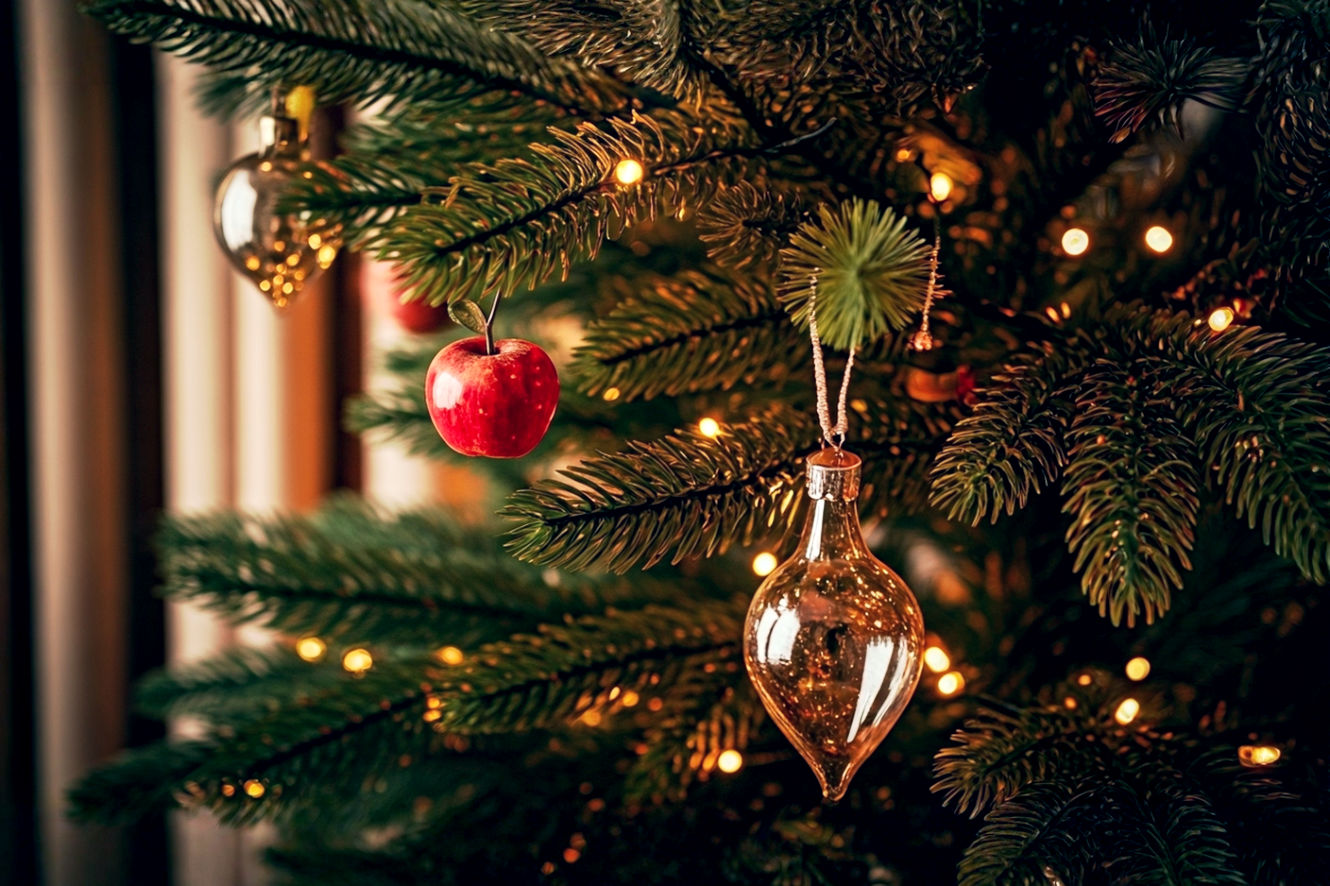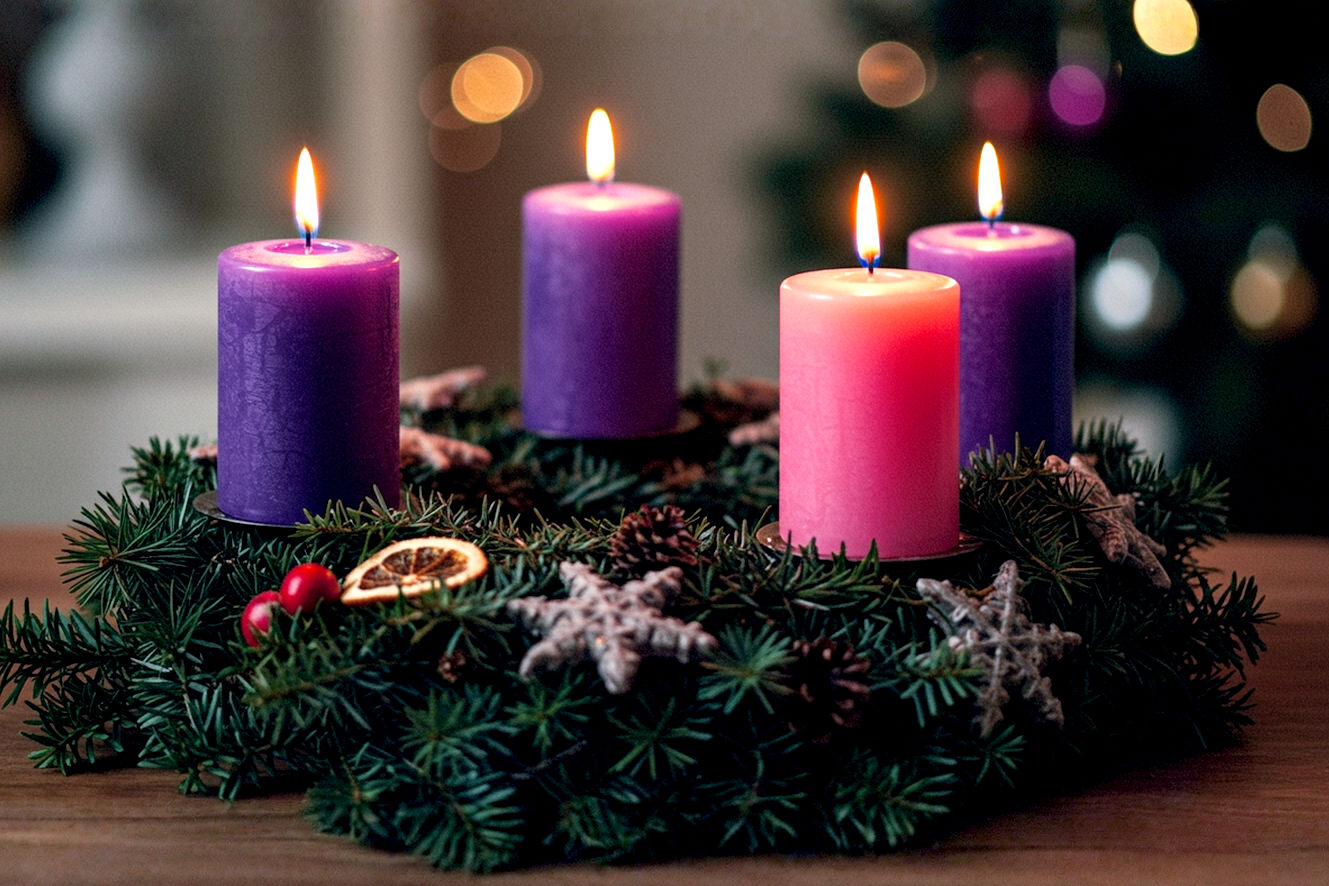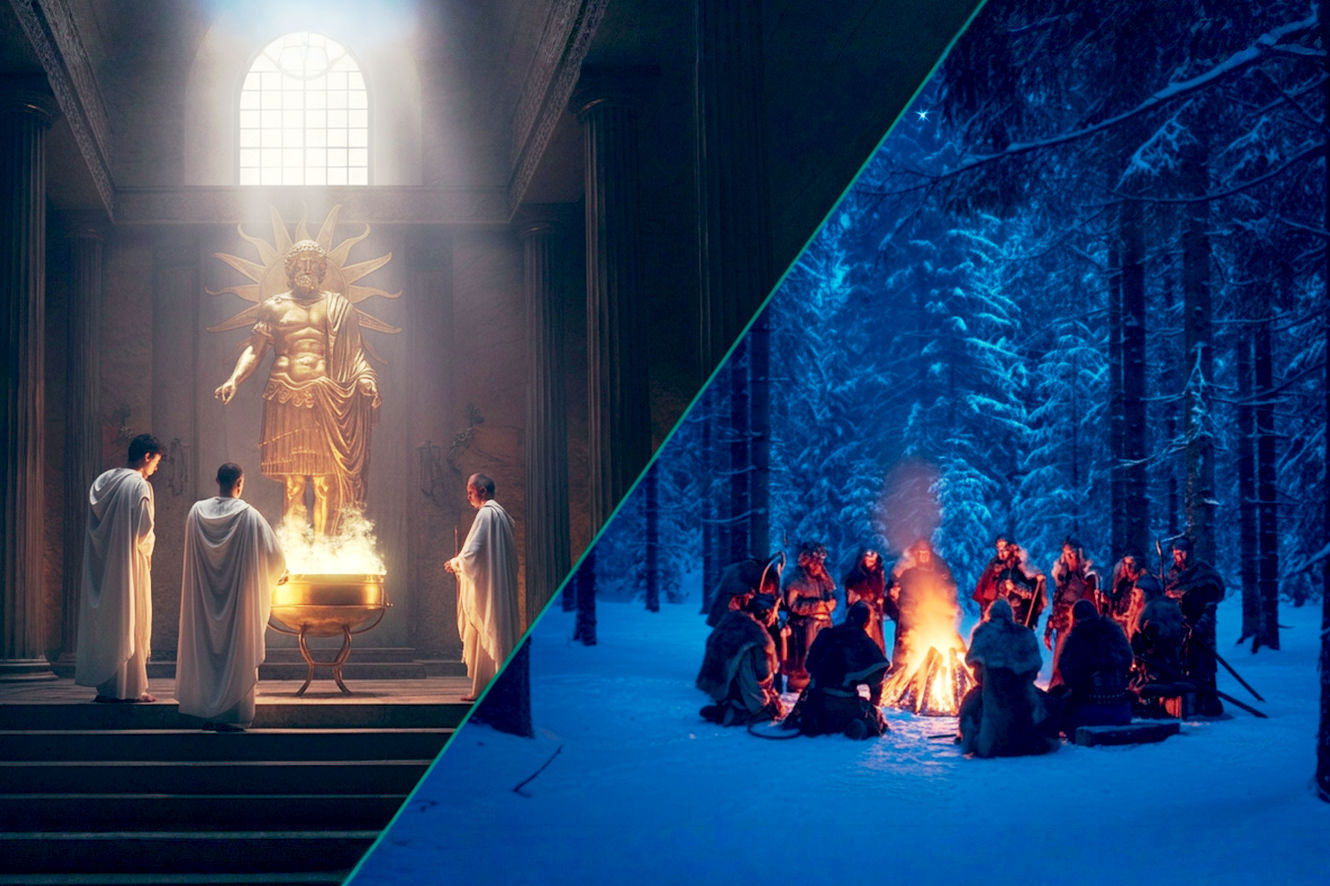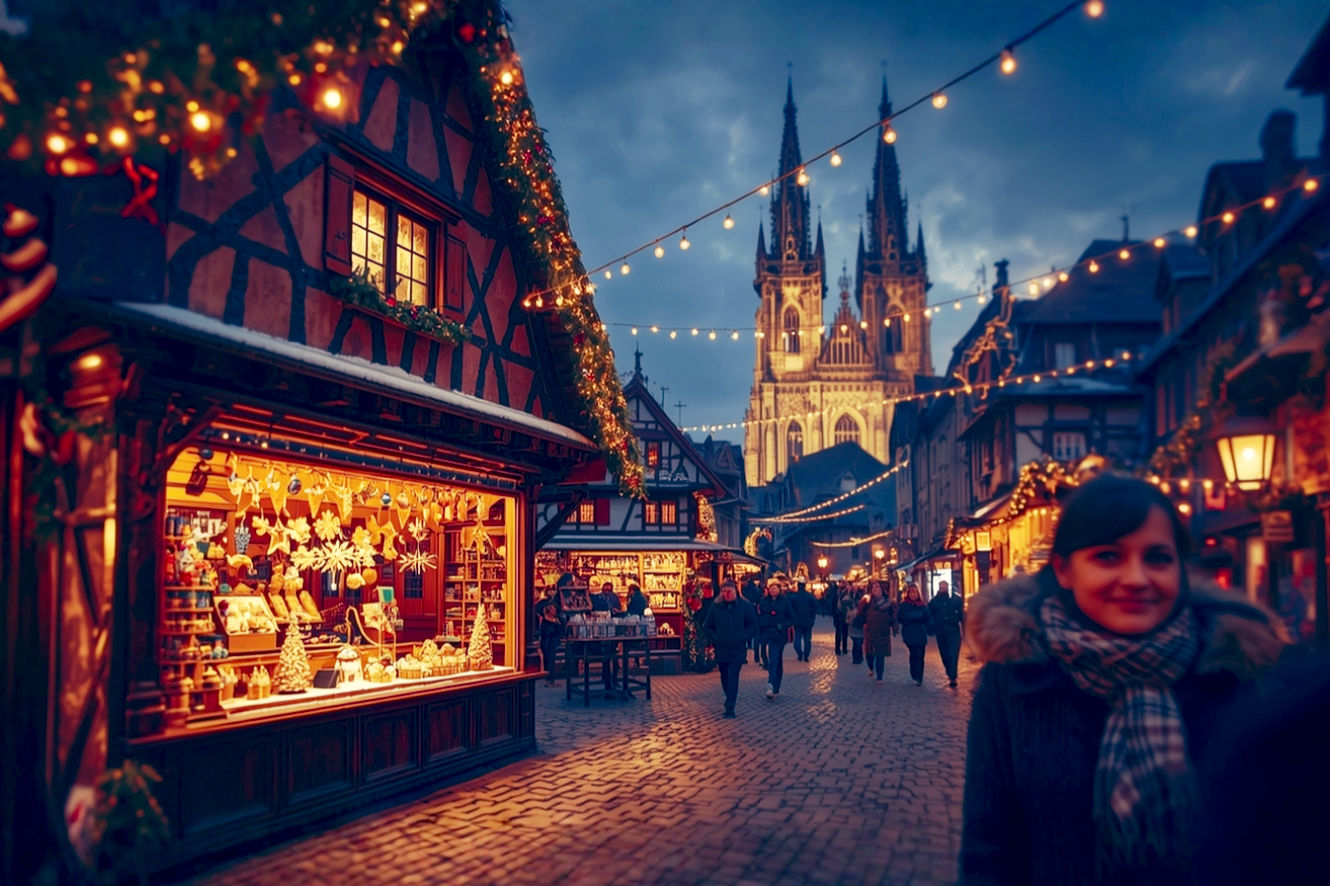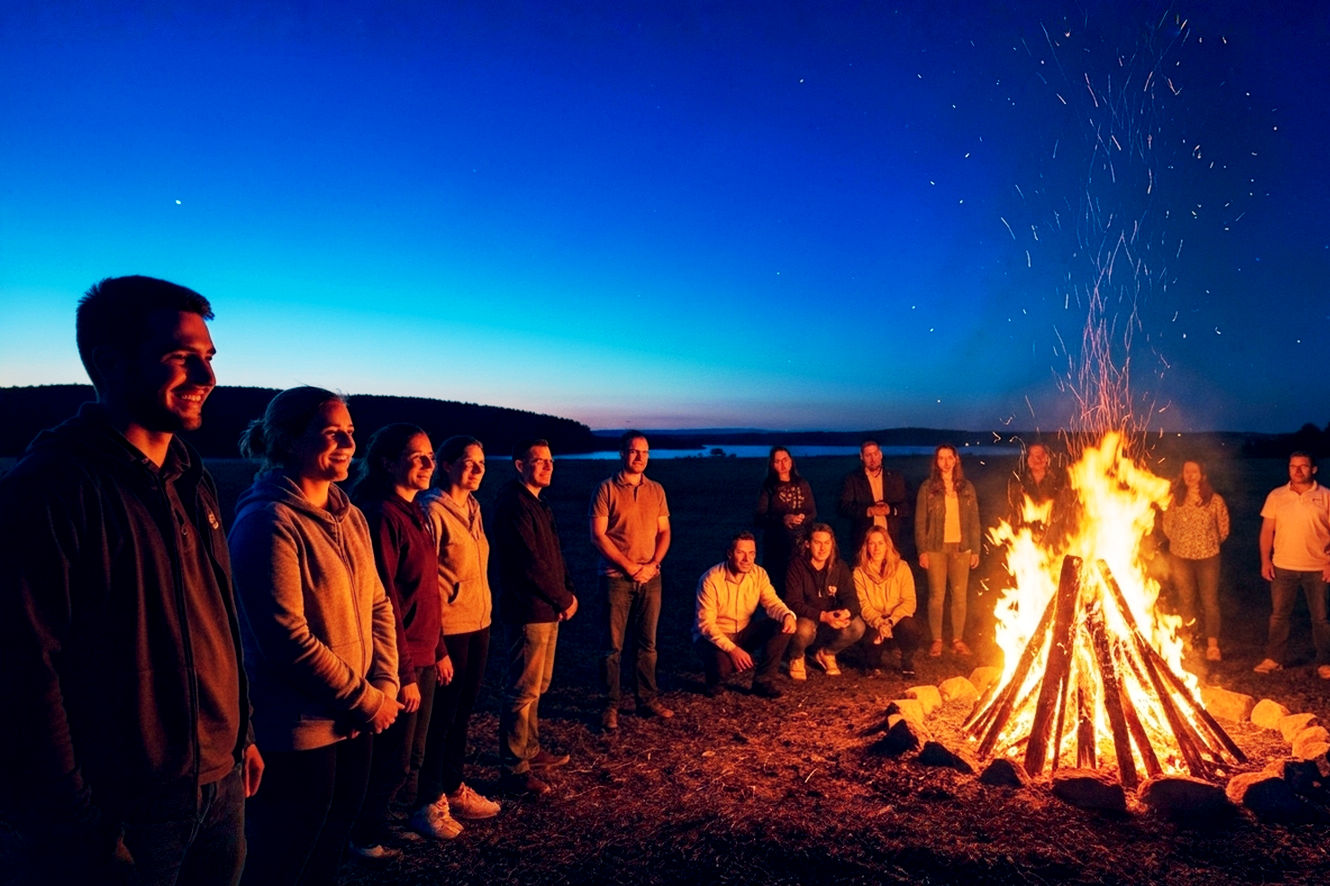This post may contain affiliate links. If you make a purchase through these links, we may earn a commission at no additional cost to you.
Every year, it begins. First, as a faint melody in a department store, then as a full-blown auditory takeover of radios and coffee shops. By the time December arrives, the air itself seems to vibrate with the sounds of sleigh bells, choirs, and crooners. Christmas music is the inescapable soundtrack to the holiday season, a collection of songs so familiar they feel as if they’ve simply always existed. We know them by heart, from the triumphant joy of “Joy to the World” to the bittersweet longing of “White Christmas.”
But these songs are more than just holiday background noise. They are cultural artifacts, time capsules of faith, commerce, and celebration. Their origins are far more complex and fascinating than most of us imagine, tracing a winding path from the bonfires of ancient pagan rituals to the billion-dollar industry of modern pop. The story of Christmas music isn’t just about religion; it’s a story of rebellion, revival, and the remarkable power of a good tune. To understand where these songs came from is to understand how we’ve shaped the holiday itself—and how it has shaped us.
From Winter Solstice to Worship: The Ancient Roots of Caroling
Long before the first Christmas, people sang to mark the changing of the seasons. The tradition of the Christmas carol doesn’t begin in a church, but in the frosted fields of pre-Christian Europe, where song was a tool for survival and celebration.
The Pagan Origins: Songs for the Sun
For ancient peoples across the Northern Hemisphere, the winter solstice was a moment of both fear and hope. As the days grew shorter and colder, the world seemed to be dying. The solstice, the shortest day of the year (around December 21st), marked a crucial turning point. It was the moment the sun “died” and was “reborn,” promising the eventual return of light and life.
To encourage the sun’s return and drive away malevolent spirits thought to lurk in the darkness, communities would light massive bonfires, feast, and, most importantly, sing and dance. These weren’t solemn hymns; they were loud, joyous, and communal songs. The act of singing in a group, often around a circle or a fire, was a way of creating a circle of protection and shared energy. The word “carol” itself is believed to derive from the Old French word carole, which described a circle dance accompanied by singing. These early carols were songs of the earth, celebrating the cycle of nature, not the birth of a savior.
Wassailing: A Toast to Good Health and a Good Harvest
Another key ancestor of the Christmas carol is the tradition of wassailing. Originating in Anglo-Saxon England, the term comes from the Old English phrase wæs hæl, meaning “be in good health.” It was both a drink and a ritual.
The practice involved townspeople going from house to house or orchard to orchard, singing and offering a drink from a communal wassail bowl (typically filled with spiced ale or cider) in exchange for gifts or more drink. When visiting an orchard, they would sing to the trees to ensure a good harvest in the coming year. When visiting the home of a lord or wealthy neighbor, their songs were a toast to the health of the household.
This is the direct forerunner of the modern practice of Christmas caroling. The core elements are all there: traveling in a group, singing at people’s doors, and the expectation of a reward, whether it’s figgy pudding or simply a moment of shared cheer. The familiar refrain, “Here We Come A-wassailing,” is a living piece of this history.
The Church’s Cautious Embrace
As Christianity spread through Europe, it faced a challenge: how to convert populations deeply attached to their pagan traditions. Rather than eradicating them, the early Church often chose to co-opt them. They strategically placed their most important holiday, Christmas, to coincide with existing winter solstice festivals like the Roman Saturnalia and the Germanic Yule.
They also tried to replace the raucous pagan carols with more pious Christian hymns. In the 4th century, Latin hymns like “Veni Redemptor Gentium” (Come, Redeemer of the Nations), written by Ambrose, Archbishop of Milan, emerged as the first true “Christmas hymns.” However, they failed to catch on with the general public. They were written in Latin, a language few common people understood, and their melodies were often somber and complex. For centuries, a divide existed: the formal, Latin hymns of the Church and the lively, vernacular folk carols of the people, which were often banned or discouraged.
The Birth of the Carol: St. Francis and the People’s Songs
For Christmas music to become what we know it as today, it had to be given back to the people. That pivotal shift is largely credited to one of history’s most beloved saints.
St. Francis of Assisi and the Nativity Scene
In 1223, St. Francis of Assisi staged a revolutionary event in the Italian village of Greccio. He wanted to make the story of Jesus’s birth more immediate and relatable for the local populace. So, he created the first known crèche, or living nativity scene, complete with live animals and local people playing the parts of Mary, Joseph, and the shepherds.
Crucially, he encouraged the singing of new songs—not in Latin, but in the local Italian dialect. These songs, known as canticles, told the Christmas story in a way everyone could understand and participate in. This was a radical act. It validated the use of common language in worship and transformed the carol from a simple folk dance into a form of narrative religious expression. While few of his original carols survive, St. Francis’s influence was immense. He opened the floodgates for a wave of new, popular carols to be written and sung across Europe in French, German, Spanish, and English.
The Lull and the Puritan Ban
Despite this progress, the carol tradition faced a formidable foe in the 16th and 17th centuries: the Protestant Reformation. In England, the rise of Puritanism brought a severe backlash against anything considered celebratory or “popish.” Puritans viewed Christmas as a decadent festival with too many ties to paganism and Catholicism.
When Oliver Cromwell and the Puritans came to power in the 1640s, they took drastic measures. In 1647, the English Parliament officially banned the celebration of Christmas. The law made it illegal to attend special church services, close your business for the day, or engage in any festive activities. Caroling was explicitly forbidden. For nearly two decades, Christmas went underground. People sang their carols in secret, preserving them in memory and hidden songbooks. Even after the monarchy was restored in 1660 and the ban was lifted, the public celebration of Christmas remained subdued for nearly 200 years.
The Victorian Revival: Inventing the Christmas We Know Today
The Christmas traditions we hold most dear—the tree, the cards, the feast, and the carols—are largely products of the 19th century. The Victorian era didn’t just revive Christmas; it practically reinvented it, and music was at the heart of this transformation.
A Christmas Carol’s Lasting Echo
It’s impossible to overstate the impact of Charles Dickens’s 1843 novella, A Christmas Carol. The story’s powerful themes of charity, family, and redemption resonated deeply with the public and cemented the idea of Christmas as a time of warmth and goodwill. Dickens masterfully weaves carols into the narrative, portraying them as sounds of joy and community, a stark contrast to Scrooge’s cold isolation. The book’s immense popularity helped fuel a nostalgic yearning for the “Merrie Olde Christmas” of the past.
The Rise of the Printed Carol
This newfound enthusiasm for Christmas created a demand for the old songs. Two English scholars were instrumental in meeting it. Davies Gilbert published Some Ancient Christmas Carols in 1822, and William Sandys followed with the much more influential Christmas Carols, Ancient and Modern in 1833. These men were musical archaeologists, traveling the countryside to collect and transcribe the folk carols that had been passed down orally for generations.
Their collections saved countless songs from being lost to history and standardized the lyrics and melodies for the first time. Many of what we now consider ancient, timeless carols were popularized by these books, including:
- “God Rest Ye Merry, Gentlemen”: One of the oldest surviving carols, mentioned in Dickens’s story. Sandys’ version is the one we sing today.
- “The First Noel”: Believed to date back to the 16th century or earlier, it was standardized and published by Sandys.
- “I Saw Three Ships (Come Sailing In)”: Another traditional folk carol preserved in print by the Victorians.
New Compositions for a New Era
The Victorians didn’t just preserve old carols; they wrote a staggering number of new ones that quickly became beloved classics. The spread of household pianos and the mass printing of sheet music meant these new songs could reach a wide audience almost instantly.
- “Hark! The Herald Angels Sing” is a perfect example of Victorian adaptation. The lyrics were written by Charles Wesley in 1739, but he intended them to be sung to a slow, solemn tune. It was Felix Mendelssohn’s triumphant, soaring melody (written in 1840 for a different purpose) that was paired with Wesley’s words in the 1850s, creating the exultant version we know today.
- “O Holy Night” has one of the most dramatic backstories. The lyrics were written in 1847 by a French poet, Placide Cappeau, who was a professed atheist. The music was composed by Adolphe Adam, a Jewish composer. Despite this, the song became a Catholic favorite until church leaders discovered its authors’ backgrounds and banned it. Legend holds that the song was revived during the Franco-Prussian War when a French soldier sang it from the trenches on Christmas Eve, prompting a German soldier to respond with a Lutheran chorale, leading to a temporary truce. It was later championed by American abolitionist John Sullivan Dwight, who was moved by the lyric “Chains shall He break, for the slave is our brother,” making it a popular anthem in the North during the Civil War.
An American Christmas: Sleigh Bells, Santa, and Secular Songs
While the British were busy reviving ancient hymns, Americans were creating a new kind of Christmas song—one that was less about the manger and more about the magic of the season.
“Jingle Bells”: A Thanksgiving Song in Disguise?
Perhaps the most famous American Christmas song of all, “Jingle Bells,” was never intended to be a Christmas song at all. It was written in the 1850s by James Lord Pierpont in Medford, Massachusetts, likely to be performed at a Thanksgiving church service. Its original title was “One Horse Open Sleigh.”
The song’s lyrics contain no mention of Christmas, Santa, or presents. Instead, they describe a popular winter activity of the time: sleigh races. It was a jaunty, slightly risqué tune about racing through the snow and picking up girls. The song was catchy but only moderately successful at first. It was rebranded as a Christmas song years later and gradually became a holiday staple. It also holds the distinction of being the first song broadcast from space, when the Gemini 6 astronauts played a prank on Mission Control on December 16, 1965, reporting a UFO before playing a rendition on a smuggled harmonica and sleigh bells.
From Poem to Pop Culture: The Santa Claus Songs
The modern American image of Santa Claus was largely shaped by Clement Clarke Moore’s 1823 poem, “A Visit from St. Nicholas” (better known as “’Twas the Night Before Christmas”). It took a few decades, but songwriters eventually caught on, creating a whole subgenre of Santa-centric songs. “Up on the Housetop,” written by Benjamin Hanby in 1864, was one of the first and is credited with being the first major song to focus on Santa’s method of delivering toys via the chimney.
The Golden Age of the Christmas Standard: Tin Pan Alley and Hollywood
The 20th century saw the birth of the commercial Christmas music industry. The rise of radio, phonograph records, and Hollywood films created a massive new market for holiday songs, and the professional songwriters of New York’s Tin Pan Alley were ready to deliver. This era produced the secular, sentimental standards that form the core of the modern Christmas canon.
Irving Berlin’s “White Christmas”: The Song That Defined an Era
No song better represents this era than “White Christmas.” Written by Irving Berlin in 1940, it was first performed by Bing Crosby on his radio show on Christmas Day, 1941, just weeks after the attack on Pearl Harbor. The song’s gentle, nostalgic longing for a picture-perfect Christmas resonated powerfully with soldiers overseas and their families back home.
It became an instant phenomenon. Crosby’s recording is the best-selling single of all time, with estimated sales exceeding 50 million copies worldwide. Berlin, a Russian-born Jewish immigrant, reportedly called it “the best song I ever wrote,” adding, “heck, I just wrote the best song anybody ever wrote!”
The Jewish Songwriters Who Crafted Christmas Classics
One of the most remarkable facts about the American Christmas songbook is how many of its most cherished secular hits were written by Jewish songwriters. These writers, often outsiders to the Christian tradition, were able to tap into the universal themes of the holiday—peace, nostalgia, family, and winter magic—without being bound by religious dogma.
- Johnny Marks was a Christmas music powerhouse. He wrote “Rudolph the Red-Nosed Reindeer” (based on a story created by his brother-in-law for the Montgomery Ward department store), “Rockin’ Around the Christmas Tree,” and “A Holly Jolly Christmas.”
- Mel Tormé and Robert Wells wrote “The Christmas Song (Chestnuts Roasting on an Open Fire)” during a blistering hot summer in 1945 as a way to “stay cool by thinking cool.” Nat King Cole’s velvety recording made it an instant classic.
Hollywood’s Holiday Magic
Musicals and films of the 1940s and 50s were a fertile ground for new Christmas standards.
- “Have Yourself a Merry Little Christmas” was introduced by Judy Garland in the 1944 film Meet Me in St. Louis. The original lyrics were incredibly somber (“Have yourself a merry little Christmas / It may be your last”). Garland and the film’s director insisted they be changed to the more hopeful version we know today.
- “Silver Bells” was written for the 1951 Bob Hope film The Lemon Drop Kid. Its original title was “Tinkle Bell,” until one of the writers’ wives pointed out the juvenile slang meaning of “tinkle.” They quickly changed it to “Silver Bells,” and the song, with its vivid imagery of a bustling city at Christmas, became a hit.
Rockin’ Around the Christmas Tree: A New Sound for a New Generation
As musical tastes changed, so did Christmas music. The rock and roll and pop artists of the mid-20th century put their own stamp on the holiday, creating songs that were energetic, cool, and sometimes even a little bit rebellious.
Elvis Presley and “Blue Christmas”
When Elvis Presley released his Christmas album in 1957, it was met with outrage by some, including Irving Berlin, who called his rock-and-roll take on holiday music a “profane caricature.” But the public loved it. His soulful, bluesy rendition of “Blue Christmas” transformed a forgotten country song into a smoldering holiday anthem of heartbreak.
The Wall of Sound Christmas: Phil Spector’s Revolution
In 1963, producer Phil Spector applied his legendary “Wall of Sound” technique to an entire album of holiday songs, A Christmas Gift for You from Phil Spector. The album featured explosive, orchestral arrangements and powerful vocals from artists like The Ronettes and The Crystals. While it wasn’t a huge hit upon its initial release (tragically issued on the same day as President John F. Kennedy’s assassination), it has since been hailed as a masterpiece. Darlene Love’s powerhouse performance on “Christmas (Baby Please Come Home)” is arguably the album’s crowning achievement, a perfect blend of desperation and festive cheer.
The Modern Era: From Enduring Hits to a New Queen of Christmas
Since the golden age, writing a new, lasting Christmas classic has become notoriously difficult. The canon seems closed, dominated by the songs of the 40s and 50s. Yet, a few have managed to break through.
The Unlikely Juggernaut: “All I Want for Christmas Is You”
When Mariah Carey released “All I Want for Christmas Is You” in 1994, no one expected it to become the phenomenon it is today. At the time, established artists rarely released original Christmas music. But Carey and co-writer Walter Afanasieff crafted a song that was both fresh and timeless.
Its magic lies in its clever construction. It uses the classic instrumentation and structure of a 1960s Phil Spector hit—the chimes, the driving piano, the powerful backing vocals—but infuses it with Carey’s modern pop-R&B sensibility. The song is pure, distilled joy, an upbeat love song that just happens to be set at Christmas. It took years to climb the charts, but it has since become the most successful modern Christmas song and a global cultural touchstone, cementing Carey’s status as the undisputed “Queen of Christmas.”
Why Is It So Hard to Write a New Christmas Classic?
The dominance of Carey’s hit highlights a modern reality: the Christmas music market is saturated with nostalgia. Radio stations, streaming playlists, and stores rely on the established canon because it’s familiar and safe. Listeners crave the songs that are tied to their own childhood memories. For a new song to break through, it must feel instantly familiar yet excitingly new—a nearly impossible task.
Conclusion: The Enduring Power of a Christmas Song
The journey of the Christmas song is a reflection of our own cultural evolution. It began as a pagan cry for the sun’s return and became a Latin prayer in a stone cathedral. It was reborn as a folk song in the mouths of peasants, banned by zealots, and revived by nostalgic scholars. It transformed into a commercial product, a tool of wartime hope, and a vehicle for pop superstardom.
These songs endure because they are more than just melodies. They are carriers of emotion and memory. They connect us to the past—to a Victorian fireside, a soldier’s foxhole, a bustling 1950s department store. They score the most important moments of our lives, from childhood wonder to adult reflection. They are at once deeply personal and universally shared, a thread of sound that ties generations together. Whether sacred or secular, ancient or modern, they are the sound of us, hoping, celebrating, and coming together in the heart of winter.

